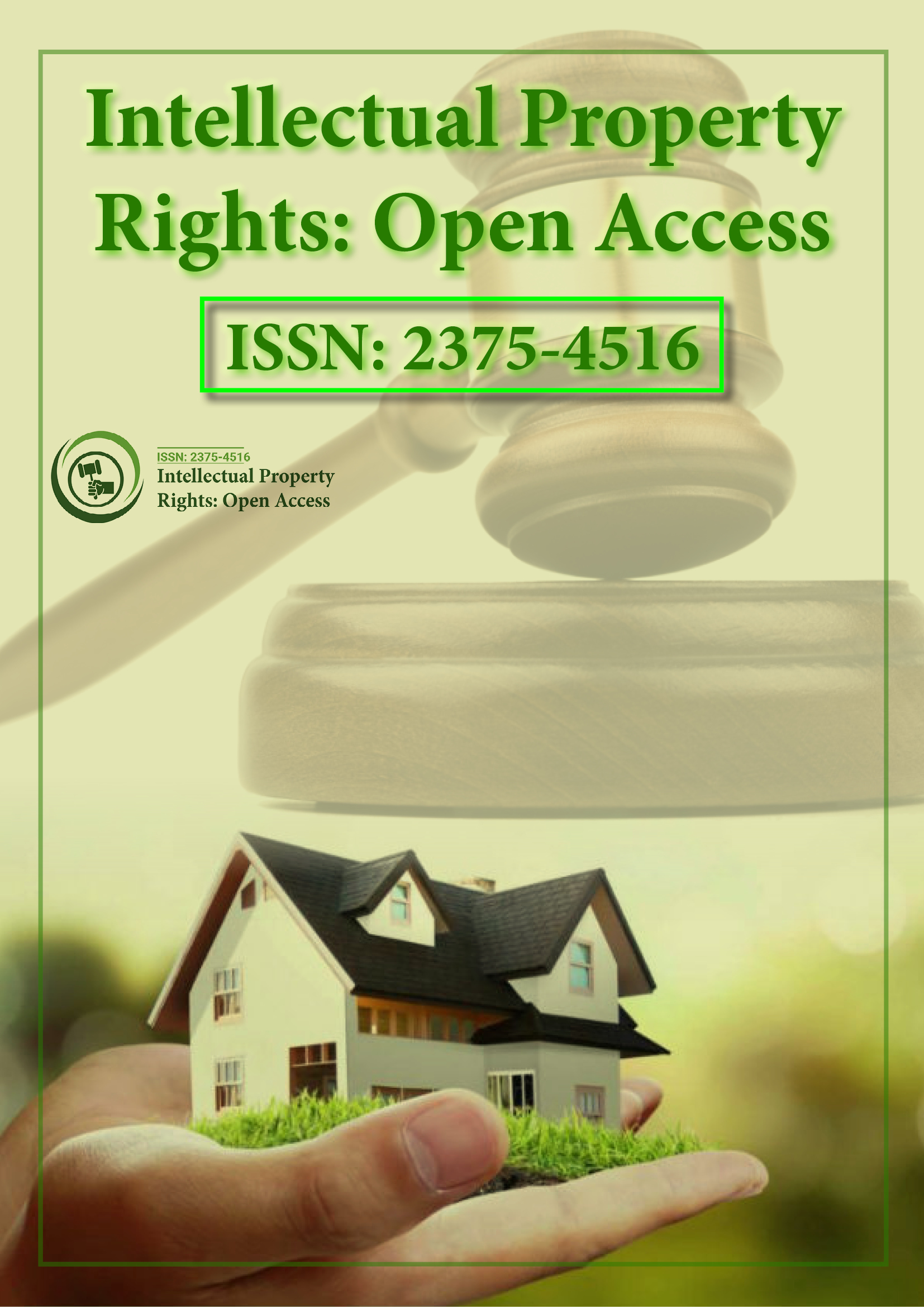Indexed In
- Open J Gate
- RefSeek
- Hamdard University
- EBSCO A-Z
- OCLC- WorldCat
- SWB online catalog
- Publons
Useful Links
Share This Page
Journal Flyer

Open Access Journals
- Agri and Aquaculture
- Biochemistry
- Bioinformatics & Systems Biology
- Business & Management
- Chemistry
- Clinical Sciences
- Engineering
- Food & Nutrition
- General Science
- Genetics & Molecular Biology
- Immunology & Microbiology
- Medical Sciences
- Neuroscience & Psychology
- Nursing & Health Care
- Pharmaceutical Sciences
Opinion Article - (2023) Volume 11, Issue 1
Convention of Paris for the Protection of Property Rights
Desart Hill*Received: 03-Mar-2023, Manuscript No. IPR-23-20584 ; Editor assigned: 06-Mar-2023, Pre QC No. IPR-23-20584 (PQ); Reviewed: 22-Mar-2023, QC No. IPR-23-20584 ; Revised: 29-Mar-2023, Manuscript No. IPR-23-20584 (R); Published: 05-Apr-2023, DOI: 10.35248/2375-4516.23.11.225
Description
Recent years have seen a significant increase in the number of States that are parties to the Paris Convention for the Protection of Industrial Property. On January 1, 1963, 51 States had joined the Convention; by January 1, 1968, this number had risen to 79. Given that numerous States are reportedly considering or planning for their accession to the Convention, a further rise may be anticipated in the near future.
The Convention will need to be applied or may be requested to be applied by a greater number of governments, national administrations or courts, practitioners, inventors, and industrial or commercial enterprises than ever before. So, it has seemed necessary to provide a brief guide outlining the key points of the Convention and providing answers to the main queries that can come up daily regarding its use. Discussions at the International Union for the Protection of Industrial Property convened in Paris in 1883 were centred on agreements about the mutual recognition of patent rights across nations. Yet, despite the fact that some saw the so-called "Paris Union" as serving as the impetus for the future globalization of intellectual rights, early attempts at harmonizing patent law took place in a climate of international conflict. Several national patent systems that were forming before 1883 showed significant variety, which is where differences in patent laws have their origins.
Moreover, those opponents of patent rights who wanted their elimination highlighted the great variety of patent schemes that were available. So, rather than the beginning of a natural process of legislative convergence, the aim of harmonization should be viewed as a defensive response to criticism of patenting per se rule. This paper allows us to recognize that the negotiations at the 1883 Convention can only be understood in terms of a fierce competition between the French and German models. Similar rivalry persisted among Paris Union members even during the interwar years, casting serious doubt on the prospect of the harmonization project's successful completion.
The States whose Governments stated that they formed a Union for the protection of industrial property were listed in the Convention of 1883's original language. At the Convention, these States were afterwards referred to as "contracting States," "States of the Union," or "High Contracting Parties." At the Washington Revision Conference in 1911, this terminology was modified to read: "The contracting countries constitute themselves into a Union for the protection of industrial property," taking into account the diversity in the internal structures of the contracting parties and the terminology used in this context by other conventions of a like nature. When the Revision Conference met in London in 1934, this text underwent additional changes.
The Paris Convention, as it has been amended since 1883, is actually a collection of Conventions that are incorporated in the many texts decided upon at the Revision Conferences. Yet, since the Revision Conference of Washington in 1911, this succession of Conventions, referred to as "Acts" (of the same Convention), has created and preserved a single Union. Hence, "This Convention" in the phrase "to which this Convention applies" must be understood to imply "this Convention in whatever text is still in force." (d) Countries are subject to the Convention if they ratify it after signing it (Article 20) or if they join it (Articles 20 and 21). It also applies to territories where a member country is accountable for its foreign relations as a result of a declaration or notification.
Citation: Hill D (2023) Convention of Paris for the Protection of Property Rights. Intel Prop Rights. 11:225.
Copyright: © 2023 Hill D. This is an open access article distributed under the terms of the Creative Commons Attribution License, which permits unrestricted use, distribution, and reproduction in any medium, provided the original author and source are credited.
